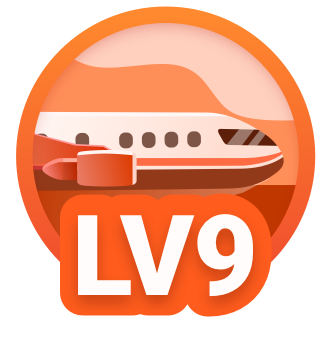Popular Trip Moments
Experiencing Science at the National Science Museum in Daejeon | Toyoko Inn: A Handy Option for you | Daejeon Art Cinema: A Great Spot for Shows in Daejeon | Hotel Onoma, Daejeon, Autograph Collection: A Review of Location and Check-in | Indoor Date with Kids: Our Own Kids Cafe | A Surprisingly Unique Art Experience at Daejeon Creative Center | Daecheongho Natural Ecology Center: Indoor Date Spot with Kids | Daejeon Modern History Exhibition Hall | Stendhal Hotel Review: A Comfortable Stay for Couples with Early Check-in Perks | Yuseong Hot Springs Foot Bath Experience | Ramada by Wyndham Daejeon: A Top Choice for Comfort and Convenience | Daejeon: Daecheongho Rose Exhibition and Festival | Church and Dance Hall: The Best Cafe in Daejeon | A cozy café with a lush full-window view, perfect for working. | A must-visit oil pasta restaurant in Daejeon | Cherry Blossoms at Gapcheon and Dakdoritang Delight | Emotional Drive Recommendation on the Outskirts of Daejeon! | Daejeon Cherry Blossom Outing 🩷 | Daejeon Cherry Blossom Spots | Daejeon travel destination with a dreamy photo zone | Healing at the Forest Retreat and a 2-Day Trip to Beopjusa Temple in Songnisan | A Peaceful Getaway: My Visit to Daejeon Meditation Garden | Daejeon Mokcheok Bridge, a luminous bridge and a perfect spot for nighttime strolls. | 💕 Daejeon Yulim Park Date Course Recommendation! The perfect place for a sentimental walk | Instagram-worthy cafe in Daejeon: Want It To Maison Tanbang | Review of Daejeon's representative tourist attraction, Hanbit Tower, for free viewing📸 | Exploring Artworks at the Multi-Cultural Space Plan A | Tuiso Station: A Must-Visit for Busy Travelers | Sungsimdang DCC Branch Food Tour Recommendation! | A cosmic journey between stars and planets: Exploring the solar system 🪐
Recommended Attractions at Popular Destinations
Bangkok attraction near me | Manila attraction near me | Tokyo attraction near me | Taipei attraction near me | Hong Kong attraction near me | Seoul attraction near me | Kuala Lumpur attraction near me | Los Angeles attraction near me | Shanghai attraction near me | New York attraction near me | Shenzhen attraction near me | Osaka attraction near me | Singapore attraction near me | London attraction near me | Guangzhou attraction near me | San Francisco attraction near me | Beijing attraction near me | Macau attraction near me | Bali attraction near me | Jakarta attraction near me | Paris attraction near me | Ho Chi Minh City attraction near me | Istanbul attraction near me | Phuket attraction near me | Chicago attraction near me | Seattle attraction near me | Toronto attraction near me | Orlando attraction near me | Cebu attraction near me | Chiang Mai attraction near me
Popular Attractions
Shanghai Museum | Sanya Atlantis Aquaventure Waterpark | Shanghai Haichang Ocean Park | Dujiangyan Scenic Spot | Beijing Wildlife Park | Hong Kong Disneyland | Hili Fun City Al Ain | Musee d'Orsay | Universal Orlando Resort | Zhangjiajie Ten Mile Gallery | Solaniwa Onsen Osaka Bay Tower | Elephant Care Park Nai Dee Phuket | La Perle | Zayed National Museum | Ha Long Bay | Aambagan Durga Mandir | Entrée Sud de la Réserve Naturelle | Dauphin Island Beach | ST SIMEON DE BRESSIEUX TC | Museo Antonio Negrete Escultor | Woodside Parkette | Bhadar River Water Fall Vavkuva | Masjid Jami' Ar Rahman | Selimiye Cami | Parque | Tokyo Cruise Asakusa Pier | Yuexiu Park | Louvre Abu Dhabi | Hang Zhou Chang Qiao Polar Ocean Park | Ancol Dreamland
Popular Restaurants in Daejeon
Kimyoungwoo Coffee | Flying Pan | Ganamji | Vesta Buffet | Myeongrang Sikdang | Wimo | Enhyae Sikdang | Nu Bo Ol | Very Shinjuku | Siru Hyanggi Daejeon Sinseong | Jeokdeok Sikdang | Solbat Mukjip | Ildang Gamjatang | Sutgorwon Naengmyeon | Moru Brunch Cafe Dunsan | Dolsotbap | Santa Claus | Ddu Babi Ang | Little Wing | Saeng Eogeoseutin | Sungsimdang Daejeon Station | Gom Espresso Main | Dasom Chaban | Hwaroya | Hyeseongok | Yuseong Bokjip | Charcoal Gol Won Cold Buckwheat Noodles | Seongsimdang Cake Bu Ddi Kkeu | What The Pork | Yussi Ne Bueok
Popular Ranked Lists
Popular Premium Hotels Near Taney County | Popular Premium Hotels in Astrakhan | Popular Luxury Hotels Near Fontevraud L'Abbaye | Top 5 Best Things to Do in Songpan | Popular Premium Hotels Near Gorod Novosibirsk | Popular Premium Hotels Near Branson | Popular Premium Hotels Near Bentonville | Popular Best Things to Do in Taishan | Popular Premium Hotels in Little Rock | Popular Must-Visit Restaurants in Songyang | Popular Must-Visit Restaurants in Seoul | Popular Premium Hotels in Villavicencio | Top 7 Local Restaurants in Nadi | Top 4 Best Things to Do in Dongfang | Popular Premium Hotels Near Novosibirsk | Popular Local Restaurants in Bangkok | Popular Must-Visit Restaurants in Hong Kong | Popular Must-Visit Restaurants in Kyoto | Popular Luxury Hotels in Versailles | Top 10 Local Restaurants in Cusco | Top 5 Best Things to Do in Tonghua | Popular Must-Visit Restaurants in Osaka | Popular Premium Hotels in Durango | Popular Must-Visit Restaurants in Barcelona | Top 10 Local Restaurants in Canberra | Top 15 Local Restaurants in Christchurch | Popular Must-Visit Restaurants in Kuala Lumpur | Popular Must-Visit Restaurants in Singapore | Popular Must-Visit Restaurants in Tokyo | Popular Premium Hotels in Oudtshoorn
Payment Methods
Our Partners
Copyright © 2025 Trip.com Travel Singapore Pte. Ltd. All rights reserved
Site Operator: Trip.com Travel Singapore Pte. Ltd.
Site Operator: Trip.com Travel Singapore Pte. Ltd.






















